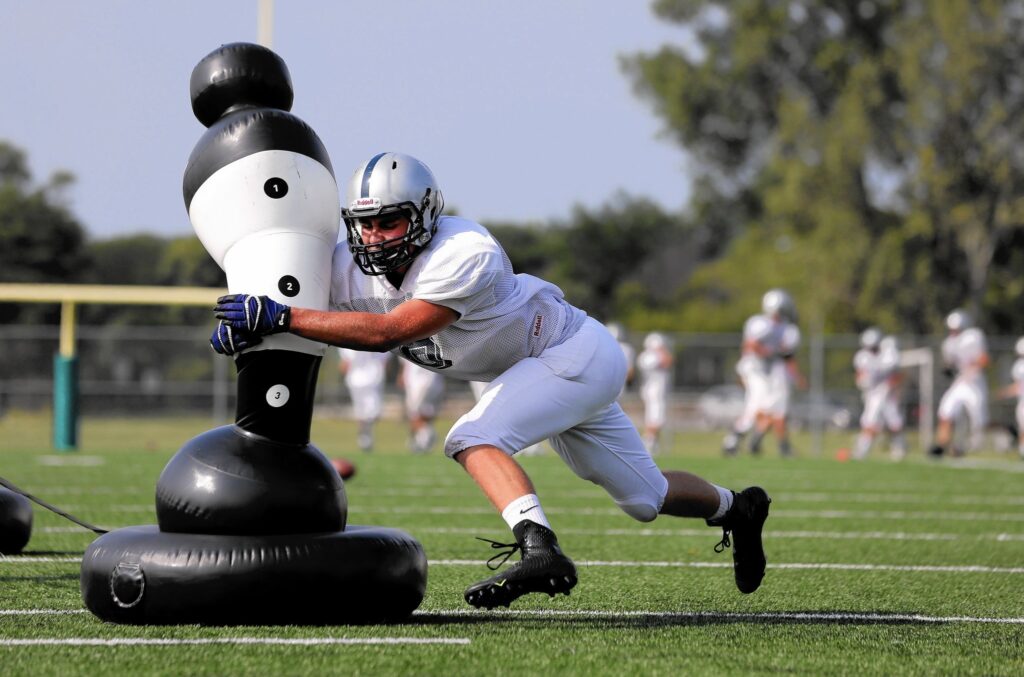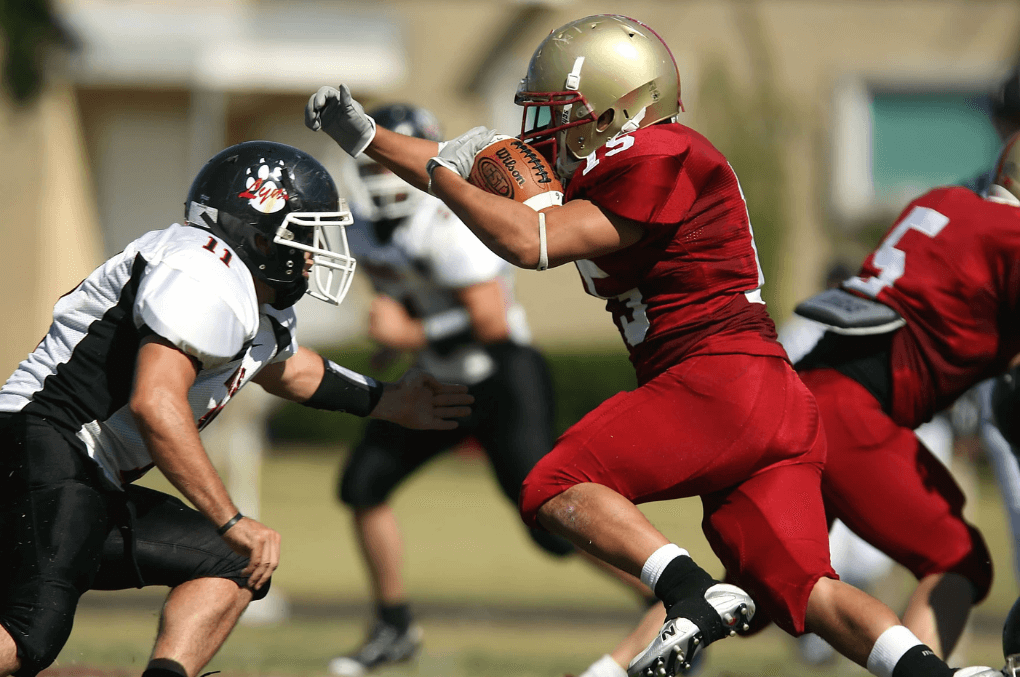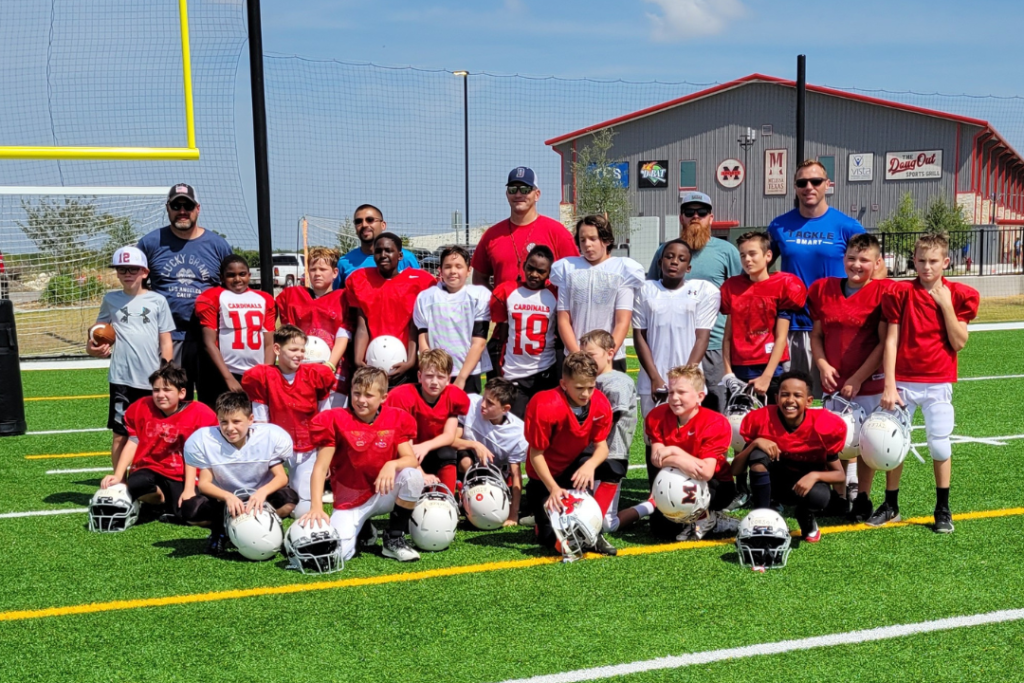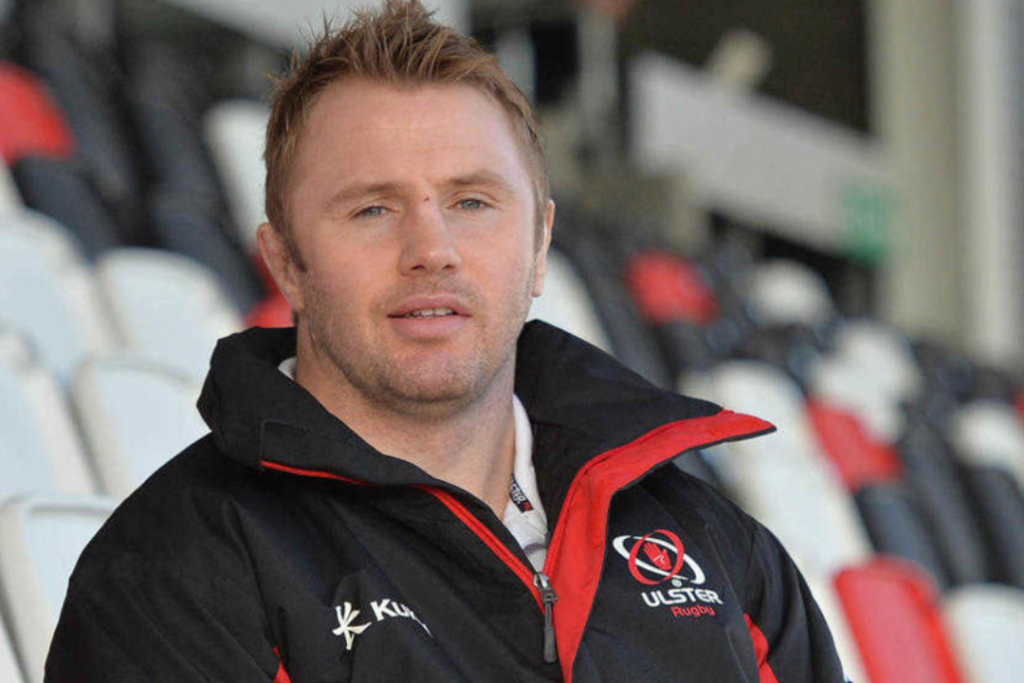When starting off on a football journey for you or your child it is very important to know what equipment you need. Football equipment such as pads, cleats, and a helmet are there for safety and protection in what is a very physical game. This – plus using the correct tackle technique as we have discussed in previous blog posts – will give your child maximum enjoyment with the smallest possible chance of them getting hurt.
Here is a look at some of the essential pieces of protective equipment in football and why they matter.
Helmet
Football helmets have been required for decades after early NFL players were getting catastrophic injuries while not wearing one. They reduce the risk of traumatic brain injury, of skull fractures (by up to 70%), and of brain tissue bruising by a similar amount. In other words, they are pretty important.
They are only important, however, if they are the correct size. This is the most important factor when getting a helmet for your child, because a helmet that is too big may as well not be worn. The best way to do this is to go to a sporting goods store and have them measure the head of your child to ensure a tight fit, but one that isn’t so tight as to be painful when worn. No helmet is ever going to be called comfortable, but the restriction in peripheral vision is more than worth it for the safety it provides.
Shoulder Pads
Just like a football helmet, football shoulder pads are worthless if they are the wrong size. In the 80s the trend was bigger is better, with linebackers like Brian Bosworth wearing pads that are almost comical when viewed through the lens of today.
Traditionally, linemen have worn the biggest pads as they work in short spaces where speed and agility are less important than heavy protection. Cornerbacks and quarterbacks have worn the smallest pads, with defensive backs needing to be able to run as fast as possible and quarterbacks needing the ability to throw the ball as naturally as possible.
The mix of protection and function is something that you and your child will need to decide together. Either way, big or small, make sure the pads are fitted properly to stop them from slipping, stop from being ineffective in contact, and giving your child the best chance to show their football skills.
Cleats
Football cleats are one of the most essential football protective equipment. Cleats come in a variety of styles and the position your kid is looking to play will help determine which type of cleat to go for.
- High top – High top cleats are ideal for players in the trenches. They focus on ankle protection over agility and therefore are the best for those players that don’t need to cut often but that could have their ankle rolled on from the side.
- Mid-cut – the middle of the three cut designs. These cleats do neither job very well and as a result, have fallen out of favor over the years.
- Low cut – These cleats look more like a traditional soccer shoe than a football cleat. The ankles are fully exposed, but the result is a dynamic (and lightweight) cleat that allows for a quick change of direction and high top speed. Ideal for skill position players and defensive backs.
Another major consideration when it comes to a cleat is the type of stud on the bottom. It is important to know the type of ground your child will most often be playing on. Turf fields often have bans on the traditional long metal cleat, with plastic and rubber molded studs or blades being the only option. These cleats are also the best for places (like Texas) where the fields are generally hard and dry. Players in other (wetter) regions might look to a more traditional stud to provide grip on that kind of field.
One final consideration is toe protection. Modern cleats – especially those designed for soccer – have little to no protection in the toe box as they are designed for a player to be able to control the soccer ball closely. This could cause a problem in certain positions on the football field as one wrong step by another player will put their cleats with all their weight on your child’s toe.
Pants with Thigh Pads
Thigh pads are another football protective equipment need where a balance between protection and safety must be found. The thighs are the most vulnerable part of the leg for direct contact, soft tissue (not structural) injuries. Anyone that has ever had a Charlie horse or corked thigh will tell you that they are not only painful but also completely debilitating towards your level of play.
The thigh pads fit inside a pair of football pants and come in either slip-in or snap-on varieties. They are designed to deflect and absorb the blow of a direct hit to the area, such as a linebacker coming through the line to put a shot on a running back. You want the thigh pads to be as lightweight as possible without compromising their protection for the ideal mix.
Mouthguard
From the outside, a football mouthguard seems like it is frustrating to wear. After all, the mouthguard can make communication difficult, and – especially if it is too big or not correctly shaped for the mouth of a player – it can also make it a little difficult to breathe in a normal pattern.
The key is to find the right blend of comfort and protection. This will allow your kid to play their best, while still being protected from any hit that snaps the mouth closed. A mouthguard works by absorbing the shock of a hit. Without one, it is easy for a blow to send shockwaves through the neck and into the teeth, jaw, and skull.
Many players think mouthguards are just to stop their teeth from being knocked out or to prevent them from biting their tongue. While this is certainly true, the biggest (long-term) benefit of a mouthguard in a contact sport is that it will reduce the chance of concussion from a particularly heavy hit.
Other Essentials
- Gloves – Position-specific gloves help with both safety and performance. The padding in the glove of an offensive lineman will help prevent finger injuries while blocking as they stiffen the digits. Wide receivers, on the other hand, will use flexible and slightly sticky gloves to help with gripping the ball as they try to make a catch. Gloves will also prevent sweaty hands from being an issue in the summer and also provide (at least a little) insulation at the end of the season when the wind and cold are not on your side.
- Protective Cup – It only takes one hit – be that from a helmet, a shoulder, or even a stray arm – for a youth or adult football player to never forget to wear a protective cup again. The pain from a hit to the groin is something that you will never forget, so it is best to be preventive here.
- Water Bottle – Hydration, hydration, hydration. Water is essential and while it is likely that a team will provide water (and perhaps Gatorade) it is always better to be prepared. Bobby Boucher knew the importance of water and with the heat in Texas and similarly located states at the beginning of fall camp it is especially important to keep your water intake high.
- Kicking Tee – I mean, if you are a kicker. If not, it is fine to skip this one.
As you will notice, many of these essential items are there for player safety. While they will help, the most important aspect of safety in a football game (or practice) is to know how to tackle properly and in a way that gives you the most protection. Cutting down on concussions and other serious injuries is certainly possible if you or your child is taught the best way to bring an opponent to the turf.
Are you a parent or coach who wants to make sure your young athlete is being taught the safest and most effective tackling techniques? Then SIGN UP to our newsletter to stay up to date with our regular content including upcoming events or camps!
